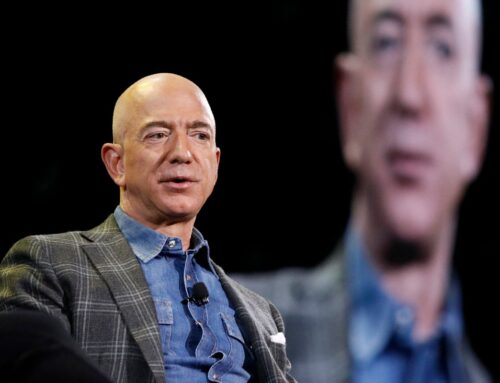Innergex Renewable Energy Inc. (TSE:INE) most popular amongst retail investors who own 48% of the shares, institutions hold 32%
December 30, 2024
-
Significant control over Innergex Renewable Energy by retail investors implies that the general public has more power to influence management and governance-related decisions
-
The top 25 shareholders own 48% of the company
A look at the shareholders of Innergex Renewable Energy Inc. (TSE:INE) can tell us which group is most powerful. The group holding the most number of shares in the company, around 48% to be precise, is retail investors. In other words, the group stands to gain the most (or lose the most) from their investment into the company.
Meanwhile, institutions make up 32% of the company’s shareholders. Generally speaking, as a company grows, institutions will increase their ownership. Conversely, insiders often decrease their ownership over time.
Let’s take a closer look to see what the different types of shareholders can tell us about Innergex Renewable Energy.
View our latest analysis for Innergex Renewable Energy
Institutions typically measure themselves against a benchmark when reporting to their own investors, so they often become more enthusiastic about a stock once it’s included in a major index. We would expect most companies to have some institutions on the register, especially if they are growing.
We can see that Innergex Renewable Energy does have institutional investors; and they hold a good portion of the company’s stock. This implies the analysts working for those institutions have looked at the stock and they like it. But just like anyone else, they could be wrong. If multiple institutions change their view on a stock at the same time, you could see the share price drop fast. It’s therefore worth looking at Innergex Renewable Energy’s earnings history below. Of course, the future is what really matters.
Hedge funds don’t have many shares in Innergex Renewable Energy. Hydro-Québec is currently the company’s largest shareholder with 20% of shares outstanding. With 6.6% and 3.2% of the shares outstanding respectively, Caisse de dépôt et placement du Québec and The Vanguard Group, Inc. are the second and third largest shareholders. In addition, we found that Michel Letellier, the CEO has 0.5% of the shares allocated to their name.
A deeper look at our ownership data shows that the top 25 shareholders collectively hold less than half of the register, suggesting a large group of small holders where no single shareholder has a majority.
While studying institutional ownership for a company can add value to your research, it is also a good practice to research analyst recommendations to get a deeper understand of a stock’s expected performance. There are a reasonable number of analysts covering the stock, so it might be useful to find out their aggregate view on the future.
While the precise definition of an insider can be subjective, almost everyone considers board members to be insiders. Company management run the business, but the CEO will answer to the board, even if he or she is a member of it.
Insider ownership is positive when it signals leadership are thinking like the true owners of the company. However, high insider ownership can also give immense power to a small group within the company. This can be negative in some circumstances.
Our data suggests that insiders own under 1% of Innergex Renewable Energy Inc. in their own names. But they may have an indirect interest through a corporate structure that we haven’t picked up on. It is a pretty big company, so it would be possible for board members to own a meaningful interest in the company, without owning much of a proportional interest. In this case, they own around CA$13m worth of shares (at current prices). It is always good to see at least some insider ownership, but it might be worth checking if those insiders have been selling.
With a 48% ownership, the general public, mostly comprising of individual investors, have some degree of sway over Innergex Renewable Energy. While this size of ownership may not be enough to sway a policy decision in their favour, they can still make a collective impact on company policies.
Our data indicates that Private Companies hold 20%, of the company’s shares. Private companies may be related parties. Sometimes insiders have an interest in a public company through a holding in a private company, rather than in their own capacity as an individual. While it’s hard to draw any broad stroke conclusions, it is worth noting as an area for further research.
While it is well worth considering the different groups that own a company, there are other factors that are even more important. For example, we’ve discovered 3 warning signs for Innergex Renewable Energy (1 can’t be ignored!) that you should be aware of before investing here.
If you are like me, you may want to think about whether this company will grow or shrink. Luckily, you can check this free report showing analyst forecasts for its future.
NB: Figures in this article are calculated using data from the last twelve months, which refer to the 12-month period ending on the last date of the month the financial statement is dated. This may not be consistent with full year annual report figures.
Have feedback on this article? Concerned about the content? Get in touch with us directly. Alternatively, email editorial-team (at) simplywallst.com.
This article by Simply Wall St is general in nature. We provide commentary based on historical data and analyst forecasts only using an unbiased methodology and our articles are not intended to be financial advice. It does not constitute a recommendation to buy or sell any stock, and does not take account of your objectives, or your financial situation. We aim to bring you long-term focused analysis driven by fundamental data. Note that our analysis may not factor in the latest price-sensitive company announcements or qualitative material. Simply Wall St has no position in any stocks mentioned.
Search
RECENT PRESS RELEASES
Related Post


